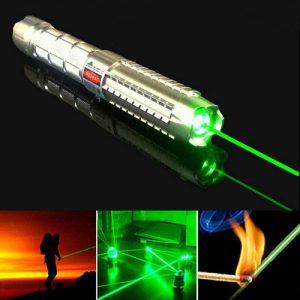Cut a single slit on the silver-plated side of the mirror with a razor, and project the laser light from the toy Laser pointer on the slit, observe the pattern formed on the wall, and think about the cause of this phenomenon. The central bright fringe produced on the screen after diffraction is wider. In the photos of single slit diffraction and circular aperture diffraction, there are some bright streaks and fringes. This is because the light from different positions on a single slit or round hole is strengthened or weakened when superimposed after passing through the slit or hole. Obstacles of various shapes can diffract the light, causing the outline of the shadow to be blurred, and stripes of light and dark appear. The study of diffraction phenomenon shows that what we usually say “light propagates along a straight line” is only a special case. Light travels in a straight line in a homogeneous medium without obstacles. When the size of the obstacle is much larger than the wavelength of the light, the diffraction phenomenon is not obvious. It can also be considered that the light travels in a straight line. However, when the size of the obstacle can be compared with the wavelength of the light, or even smaller than the wavelength of the light, the diffraction phenomenon is very obvious. At this time, it cannot be said that the light travels in a straight line.
The laser pointer is used to irradiate the glass rod to produce the effect of laser refraction. We can see that the Green laser pointer is originally just one line. When it passes through the glass rod, it instantly becomes the kind of effect of a projector. People are dazzled. It is very beautiful. At this moment, a colorful light will be emitted from the direction without the laser pointer. When the colorful light is reflected by a mirror, it will scatter a very beautiful light again.
